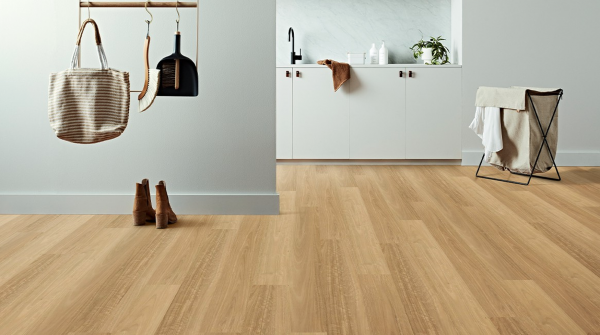Hybrid Flooring - Its Advantages and Disadvantages


New trend Hybrid is a modern flooring option for any home and office. Hybrid flooring is essentially a new floor covering option that combines vinyl waterproofing and scratch-resistant laminate. In addition to the wide variety of styles and designs available, this hybrid flooring also maintains an affordable price point.
Pros and cons of hybrid flooring
Generally, the pros of the hybrid floor may outweigh the cons, however, if you are not very sure of that, then you can always discuss with any specialist who can advise you on the correct option of hybrid for your home or office.
The following are a few pros of hybrid flooring:
- Hybrid flooring is completely waterproof.
- Hybrid flooring will be durable and will be great flooring material if you have kids and pets at home.
- Hybrid flooring will offer your home/office a very stylish look, almost similar to the appearance of laminate flooring.
- Hybrid flooring will be available with underlay built-in, which will offer you savings that you need while purchasing this extra flooring accessory.
- Generally, hybrid flooring will be UV resistant.
- In comparison to conventional flooring, hybrid flooring requires much less maintenance. You will just need a vacuum/broom. Since hybrid floors are usually waterproof, hence you can mop.
A few cons too must be considered while installing hybrid flooring, which are:
- Generally, hybrid planks will be a little more expensive than laminate floorboards or vinyl plank flooring.
- Hybrid flooring can't be resanded, despite being very durable. You need to replace the entire hybrid floorboard if yours gets damaged.
- The floor that the hybrid flooring will be going on top of the subfloor needs to be at the dead level because it is pretty thin
.
Questions commonly asked about hybrid flooring
What are hybrid floorboards?
Hybrid vinyl floors are the latest hybrid flooring on the market, and they are generally a mixture of laminate flooring as well as vinyl planks when it comes to waterproofing. This produces beautifully authentic flooring that can endure a longer period of time.
Whether hybrid flooring is waterproof?
Surely, hybrid floorboards are absolutely waterproof as they combine durable protective top layers having a waterproof core. Also, hybrid floorboards click together snugly, which means that any moisture can seep between the floorboards. In bathrooms and kitchens, hybrid floorboards can work fine.
What is the basic difference between SPC, WPC, limestone core, and limestone composite core, while choosing hybrid flooring?
While choosing your hybrid floors, you have two main choices, as follows:
· Stone Plastic Composite (SPC) type of hybrid flooring
· Wood Plastic Composite (WPC) type of hybrid flooring.
When we are talking about hybrid flooring, then it will be the mixture of these materials for creating your hybrid floorboards. At the same time, SPC type of hybrid flooring will be made from an amalgamation of limestone core, or composite core, along with vinyl. However, WPC hybrid flooring will be made from a wood and vinyl combination.
Therefore, SPC hybrid flooring will be slightly more durable, but because of the little higher density of all these floorboards, it will be seen as a little less comfortable than WPC hybrid flooring.

Also, a less common type also presents for your choice:
IPC is an Infused Polymer Core.
This core is silica-free and tough. A Customer's health is protected against airborne crystalline silica.
EPC is an Engineered Plastic Core.
This option enhances the stability of the flooring and can be used in high-traffic areas.
MGO is a Reinforced Mineral Core manufactured from Magnesium Oxide.
The material is very strong yet very light. Mold, mildew, and harmful bacteria are not an issue with this flooring, making it suitable for high-density areas.
